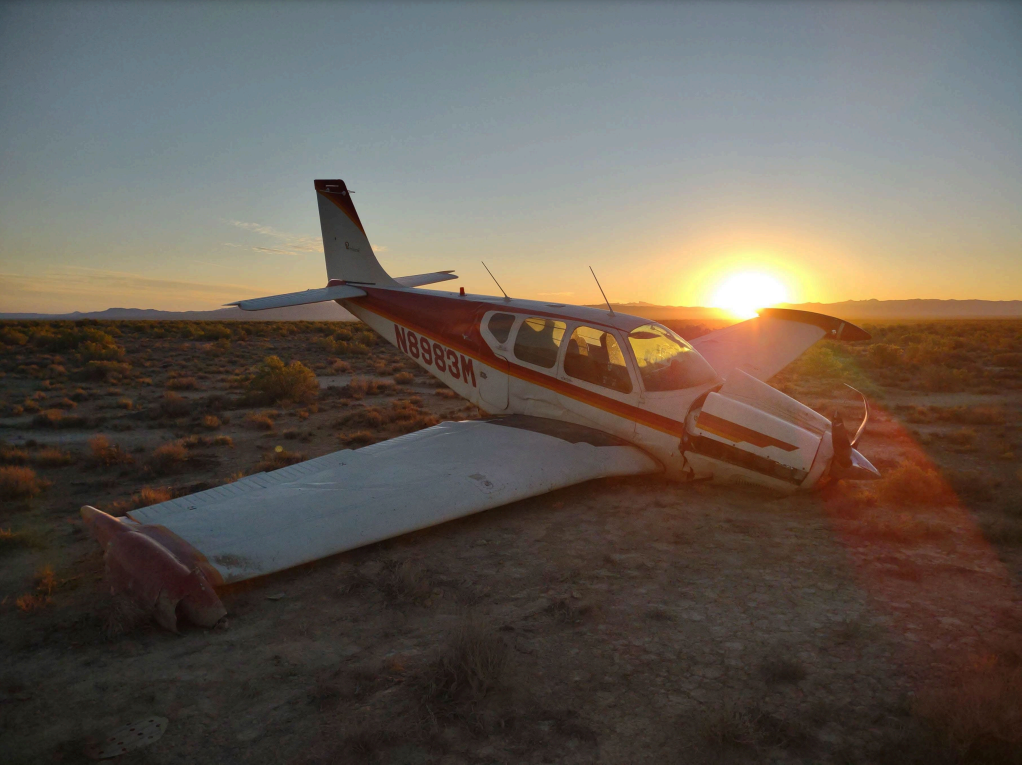
ASN Wikibase Occurrence # 346029
This information is added by users of ASN. Neither ASN nor the Flight Safety Foundation are responsible for the completeness or correctness of this information.
If you feel this information is incomplete or incorrect, you can submit corrected information.
| Date: | Saturday 11 September 2021 |
| Time: | 13:00 |
| Type: |  Beechcraft 35-B33 Debonair |
| Owner/operator: | HND Aviators LLC |
| Registration: | N8983M |
| MSN: | CD-733 |
| Year of manufacture: | 1964 |
| Engine model: | Continental IO-550 |
| Fatalities: | Fatalities: 0 / Occupants: 1 |
| Aircraft damage: | Substantial |
| Category: | Accident |
| Location: | Baker, NV -
 United States of America United States of America
|
| Phase: | Initial climb |
| Nature: | Private |
| Departure airport: | Baker, NV |
| Las Vegas-Henderson Sky Harbor Airport, NV (HSH/KHND) | |
| Investigating agency: | NTSB |
| Confidence Rating: |
On September 11, 2021, about 1300 Pacific daylight time, a Beech BE35-B33, N8983M, was substantially damaged when it was involved in an accident near Baker, Nevada. The pilot was not injured. The airplane was operated as a Title 14 Code of Federal Regulations Part 91 personal flight.
The accident flight occurred after a mechanic replaced the exhaust pushrod for the No. 1 cylinder. After takeoff and during the initial climb, the engine lost total power. The airplane sustained substantial damage during a forced landing in desert terrain.
Postaccident examination of the engine revealed that the No. 5 connecting rod strap exhibited fracture signatures consistent with fatigue cracks in multiple areas. The connecting rod also exhibited signs of heat distress. The No. 5 connecting rod bearing was severely worn, deformed, flattened, and darkened, consistent with high heat exposure. The general heat tinting and damage on the bearing, connecting rod, and crankshaft journal indicated that the No. 5 connecting rod bearing likely experienced frictional heating from insufficient clearance between the bearing and the journal. The insufficient clearance could have been produced by excessive wear on the bearing or journal, bearing surface damage such as spalling, or insufficient lubrication.
Probable Cause: A total loss of engine power during the initial climb due to the failure of the No. 5 connecting rod bearing.
Accident investigation:
 |
|
Sources:
NTSB
https://data.ntsb.gov/Docket?ProjectID=104012
Location
Images:

Revision history:
| Date/time | Contributor | Updates |
|---|---|---|
| 28-Sep-2023 16:52 | Captain Adam | Added |
Corrections or additions? ... Edit this accident description
The Aviation Safety Network is an exclusive service provided by:


 ©2024 Flight Safety Foundation
©2024 Flight Safety Foundation